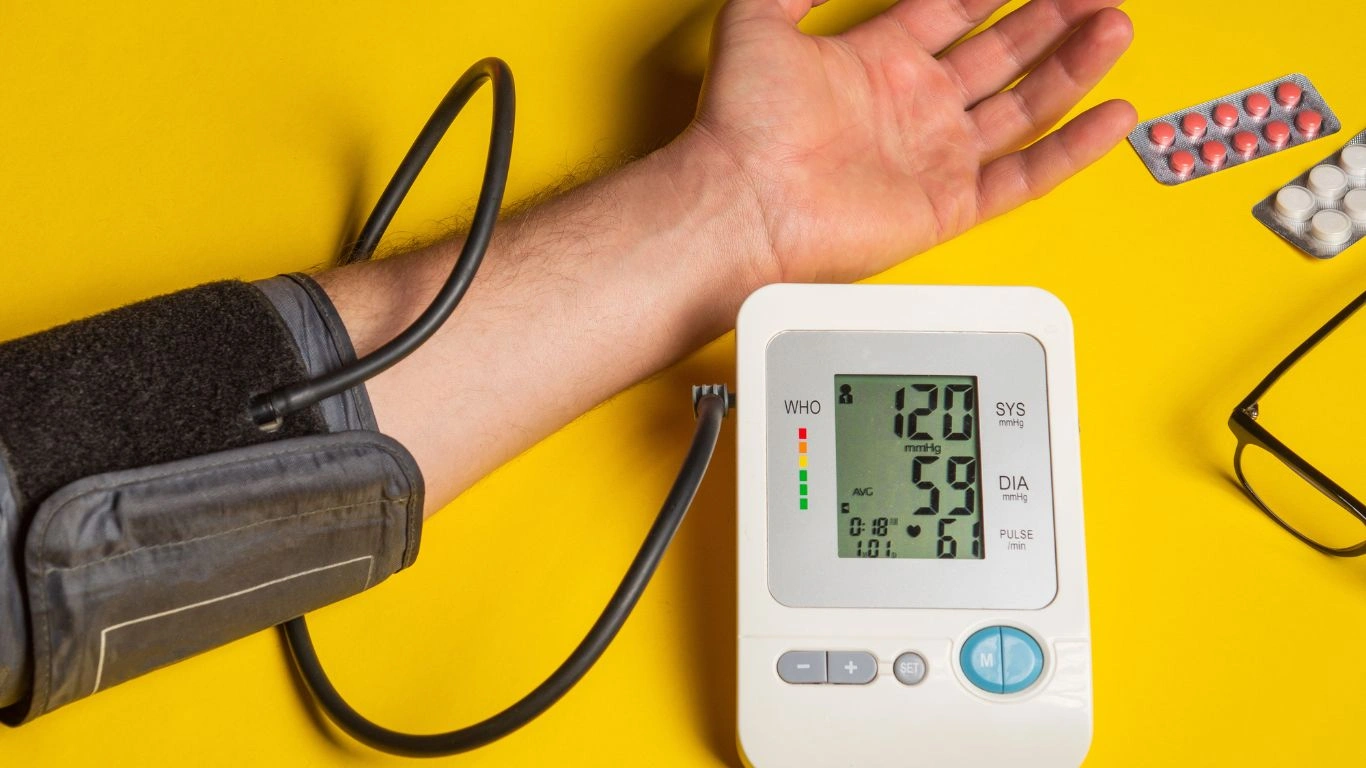How Green Vegetables Lower Blood Pressure: Natural Heart Health Boost
As someone who’s dedicated years of research and practice to understanding hypertension, I can tell you that high blood pressure isn’t just a minor health issue. It’s a silent killer, affecting millions globally. That said, there’s good news! A simple, natural way to help manage and even lower your blood pressure is by incorporating green vegetables into your diet. Over the years, I’ve seen countless patients improve their heart health by making this one simple dietary change. But how exactly do green vegetables lower blood pressure? Well, let me take you through it!
Why Green Vegetables are So Powerful for Lowering Blood Pressure
When it comes to managing hypertension, it’s not just about reducing salt intake or popping pills. Nature has gifted us with certain foods that pack a punch in regulating blood pressure. Among them, green vegetables reign supreme. Why? Because they are rich in nutrients that directly target and manage the root causes of high blood pressure. But let’s break it down a little.
1. The Magic of Potassium
Potassium is one of the unsung heroes when it comes to lowering blood pressure. I always recommend it to my patients, and let me tell you – green vegetables are loaded with this mineral. Potassium helps balance the negative effects of sodium, which we all know can spike blood pressure. The more potassium-rich foods you eat, the better your body can handle the sodium in your diet, which ultimately lowers your blood pressure.
For instance, spinach, kale, and Swiss chard are excellent sources of potassium. By including these in your meals, you’re helping your body maintain the right fluid balance, keeping your arteries relaxed and your blood pressure in check.

2. Rich in Magnesium: A Blood Pressure’s Best Friend
If you’ve been dealing with high blood pressure, you might be familiar with the term ‘magnesium.’ This mineral plays a significant role in regulating blood pressure. Magnesium helps your blood vessels relax, and if they’re not constricted, your blood flows more freely, lowering the overall pressure.
Thankfully, many green vegetables are packed with magnesium. For example, spinach, collard greens, and even some broccoli varieties can give you the magnesium boost your body needs to keep blood pressure in a healthy range. It’s as simple as throwing some steamed broccoli into your lunch or snacking on a fresh spinach salad.
The Power of Nitric Oxide from Green Veggies
Now, this part always gets my patients excited! Nitric oxide is a molecule in the body that helps dilate (or open up) blood vessels. When your blood vessels are open, blood can flow more freely, which naturally lowers blood pressure. Green vegetables, particularly leafy greens, are a great source of nitrates, which the body converts into nitric oxide.
3. Leafy Greens and Nitrate Boost
Research has shown that the nitrates in leafy greens like spinach and arugula are extremely beneficial for improving vascular health. When I advise patients with hypertension, I always emphasize the importance of eating greens like kale, lettuce, and arugula. These foods not only help relax blood vessels but also enhance blood flow, ensuring that oxygen and nutrients reach your vital organs efficiently.
What’s even more exciting is that these nitrates can help you avoid the need for excessive medication. A diet high in leafy greens means your body can produce nitric oxide naturally, improving your overall cardiovascular health without any side effects.

4. Green Veggies and Their Anti-Inflammatory Benefits
Hypertension is often linked with inflammation in the body, and chronic inflammation can contribute to the stiffening of arteries, which leads to higher blood pressure. This is where the anti-inflammatory properties of green vegetables come in handy. Greens like kale and Brussels sprouts contain antioxidants, which help fight inflammation and reduce the strain on your cardiovascular system.
Incorporating these vegetables into your meals can help soothe inflammation, making it easier for your body to manage blood pressure effectively. And let me tell you from personal experience, even a slight reduction in inflammation can make a noticeable difference in your energy levels and overall health.
The Fiber Connection
Fiber is another component that you can’t overlook when managing hypertension. It helps with digestion, yes, but it also plays a role in controlling cholesterol levels and maintaining healthy blood pressure. Many green vegetables are high in soluble fiber, which helps lower cholesterol and blood sugar levels. This indirect effect on blood pressure is often underestimated but is incredibly significant in the long run.
5. Boost Your Fiber Intake with Green Veggies
Eating foods rich in fiber can help prevent the build-up of plaque in your arteries, ultimately lowering blood pressure. One of the easiest ways to increase fiber in your diet is by adding vegetables like broccoli, peas, and spinach to your meals. These foods are great sources of both soluble and insoluble fiber, which help improve heart health by reducing cholesterol levels and supporting healthy blood vessels.

How Green Vegetables Help Reduce the Risk of Stroke
Hypertension, when left unchecked, increases the risk of more severe health conditions like strokes. But did you know that eating green vegetables can actually lower your risk of suffering from a stroke? Let me explain. High blood pressure can lead to the thickening and hardening of blood vessels, making it difficult for blood to flow freely. This can eventually lead to a blockage, which causes strokes. Green vegetables, rich in essential nutrients like potassium, magnesium, and antioxidants, can reduce this risk by helping to keep your arteries clear and blood flowing smoothly.
1. Green Veggies and Their Role in Preventing Blood Clots
One of the major concerns with high blood pressure is the risk of blood clots. These clots can block the blood supply to the brain, leading to a stroke. However, the high levels of vitamin K in green vegetables play a vital role in ensuring blood flow is smooth and uninterrupted. Vitamin K helps in the regulation of blood clotting, which reduces the risk of clots forming in the first place. So, by enjoying a healthy dose of leafy greens like kale or collard greens, you’re helping to prevent blood clots and reduce your stroke risk.
Personally, I’ve seen firsthand how incorporating these vitamin K-rich vegetables into a diet has helped reduce the chances of patients having a stroke. Even the smallest changes, like adding a handful of kale to your morning smoothie, can have a profound impact on your vascular health.

2. Green Veggies and Their Anti-inflammatory Effects on the Brain
Chronic inflammation in the brain can also contribute to strokes. In my practice, I often discuss how green vegetables, which are rich in antioxidants, play a key role in reducing this inflammation. These antioxidants neutralize harmful free radicals that cause cellular damage and lead to inflammation in the arteries. For example, leafy greens like spinach, kale, and arugula contain compounds like flavonoids, which help fight off this damaging inflammation.
By adding these vegetables to your diet, you’re not only lowering your blood pressure but also helping to keep your brain healthy and protected. It’s a win-win when you think about how simple it is to incorporate these foods into your meals.
The Long-term Benefits of a Green Veggie Diet for Heart Health
While you might start eating more green vegetables to lower your blood pressure, the long-term benefits go far beyond just preventing hypertension. These veggies play a significant role in overall heart health. By promoting better blood flow, reducing inflammation, and providing essential nutrients, they contribute to the long-term function of your heart and vascular system.
3. Reducing Your Risk of Heart Disease
In my experience, one of the best ways to prevent heart disease is by maintaining a healthy diet. Green vegetables like broccoli and spinach are particularly effective because they help reduce cholesterol levels. Elevated cholesterol levels are a major risk factor for heart disease, and consuming vegetables that are rich in fiber and antioxidants helps to naturally lower those levels. By eating more greens, you’re supporting your heart’s health by keeping cholesterol in check.
Studies have shown that the regular consumption of greens, such as broccoli, kale, and cabbage, can significantly lower your chances of developing cardiovascular diseases. By lowering your blood pressure and cholesterol simultaneously, you
The Role of Green Vegetables in Weight Management and Blood Pressure
One of the most impactful ways that green vegetables help in lowering blood pressure is by supporting healthy weight management. Maintaining a healthy weight is essential for controlling hypertension. As we know, being overweight or obese can put added pressure on the heart and blood vessels, making it harder to manage blood pressure levels. But don’t worry – the good news is that green vegetables can assist with weight loss in a natural, healthy way.
1. Low-Calorie, High-Nutrient Powerhouses
As someone who’s worked with individuals aiming to lose weight, I always recommend green vegetables because they are low in calories but high in nutrients. This makes them the perfect food choice for anyone looking to manage their weight without sacrificing nutrition. Vegetables like spinach, kale, and zucchini are full of essential vitamins and minerals that nourish the body while keeping the calorie count low.
Adding more green veggies to your diet means you can eat larger portions without worrying about the calorie load. This allows you to feel full and satisfied, while simultaneously creating a calorie deficit for weight loss – which in turn helps lower blood pressure. Trust me, I’ve seen this time and time again with patients who adopted a veggie-rich diet and experienced significant improvements in their blood pressure readings.

2. Fiber: The Secret Ingredient for Weight Loss
As we discussed earlier, fiber is essential in maintaining healthy blood pressure levels. But fiber also plays a massive role in weight management. The fiber found in green vegetables helps you feel fuller for longer, reducing overall food intake. This is especially important when you’re working toward lowering your blood pressure by managing your weight.
Green vegetables like broccoli and Brussels sprouts are great sources of fiber, and they also assist in regulating digestion. The fiber in these veggies binds to cholesterol and helps it pass through the digestive system, preventing it from entering the bloodstream. As a result, your cholesterol levels stay in check, contributing to lower blood pressure. The combination of fiber’s filling effect and its ability to promote digestive health makes it a powerful tool for weight management and heart health.
How to Incorporate Green Vegetables into Your Daily Diet
Now that we’ve covered the many benefits of green vegetables in lowering blood pressure, you’re probably wondering how you can get more of them into your diet. Don’t worry – it’s not as hard as it may sound. I’ve worked with many patients, and I’ve found that a few simple changes can make all the difference.
1. Start with Smoothies and Juices
If you’re not a fan of eating large portions of vegetables at once, blending them into smoothies or juices can be a great way to incorporate greens into your day. Throw a handful of spinach or kale into your morning smoothie along with some fruit like bananas or berries for a delicious, heart-healthy treat. Over time, you’ll get used to the taste and start craving these nutrient-packed drinks. It’s an easy and enjoyable way to get your daily servings of green vegetables without even thinking about it!
2. Add Greens to Soups and Stews
Another easy way to boost your veggie intake is by adding leafy greens to soups and stews. These dishes are perfect for simmering greens like kale, Swiss chard, or spinach. Not only do they cook down and blend in beautifully, but they also absorb all the flavors of the broth, making them delicious and nutritious. I often tell my patients to experiment with different greens and add them to their favorite soup recipes. It’s a quick and simple way to boost your vegetable intake without compromising on taste.
3. Make Salads the Star of Your Meal
Salads are, of course, an obvious choice for increasing green vegetable consumption. But you don’t have to stick with just lettuce! Kale, arugula, spinach, and mixed greens can be used to create a hearty, filling salad. Add some healthy fats like avocado or a handful of nuts, and a lean protein like grilled chicken or tofu, and you’ve got yourself a meal that’s rich in nutrients, low in calories, and great for your blood pressure!

4. Experiment with Green Veggie-based Dishes
If you enjoy cooking, there are so many creative ways to work green vegetables into your meals. For example, you can make a savory kale pesto, add spinach to your eggs or omelets, or even bake some greens into a pizza. Don’t be afraid to experiment and try new recipes. The more variety you add, the easier it will be to make green vegetables a part of your everyday routine.
References
For more information on how green vegetables impact blood pressure and overall heart health, check out some of the trusted resources below:
- Green Vegetables and Hypertension
- Nutritional Benefits of Green Vegetables
- Research on Hypertension Management
Disclaimer
The information provided in this article is based on personal experience and general health knowledge. It is not intended as medical advice. Always consult with a healthcare provider before making significant changes to your diet or lifestyle, especially if you have existing health conditions. Hypertension is a serious condition, and professional medical advice is essential for appropriate treatment and management.

Dr. Gwenna Aazee is a board-certified Internal Medicine Physician with a special focus on hypertension management, chronic disease prevention, and patient education. With years of experience in both clinical practice and medical writing, she’s passionate about turning evidence-based medicine into accessible, actionable advice. Through her work at Healthusias.com, Dr. Aazee empowers readers to take charge of their health with confidence and clarity. Off the clock, she enjoys deep dives into nutrition research, long walks with her rescue pup, and simplifying medical jargon one article at a time.





